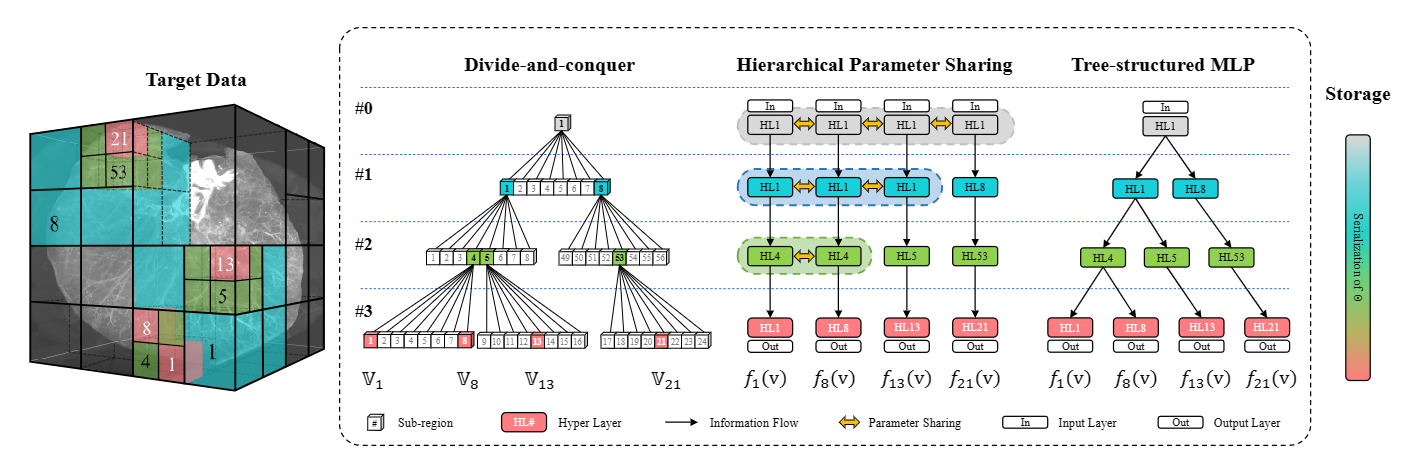TINC: Tree-structured Implicit Neural Compression
Implicit neural representation (INR) can describe the target scenes with high fidelity using a small number of parameters, and is emerging as a promising data compression technique. However, limited spectrum coverage is intrinsic to INR, and it is non-trivial to remove redundancy in diverse complex data effectively. Preliminary studies can only exploit either global or local correlation in the target data and thus of limited performance. In this paper, we propose a Tree-structured Implicit Neural Compression (TINC) to conduct compact representation for local regions and extract the shared features of these local representations in a hierarchical manner. Specifically, we use Multi-Layer Perceptrons (MLPs) to fit the partitioned local regions, and these MLPs are organized in tree structure to share parameters according to the spatial distance. The parameter sharing scheme not only ensures the continuity between adjacent regions, but also jointly removes the local and non-local redundancy. Extensive experiments show that TINC improves the compression fidelity of INR, and has shown impressive compression capabilities over commercial tools and other deep learning based methods. Besides, the approach is of high flexibility and can be tailored for different data and parameter settings. The source code can be found at https://github.com/RichealYoung/TINC .
PDF Abstract CVPR 2023 PDF CVPR 2023 Abstract

